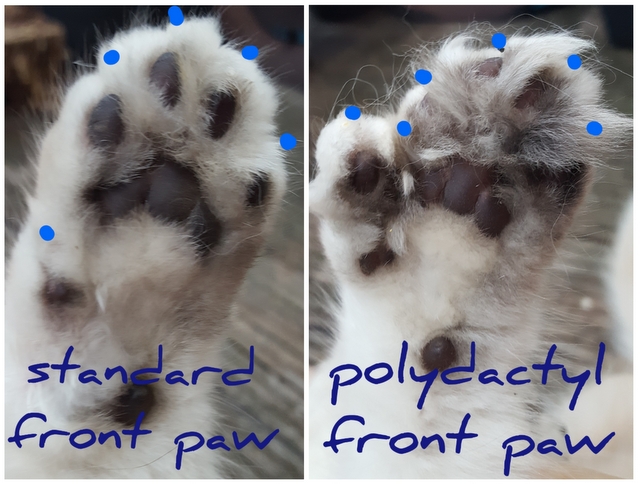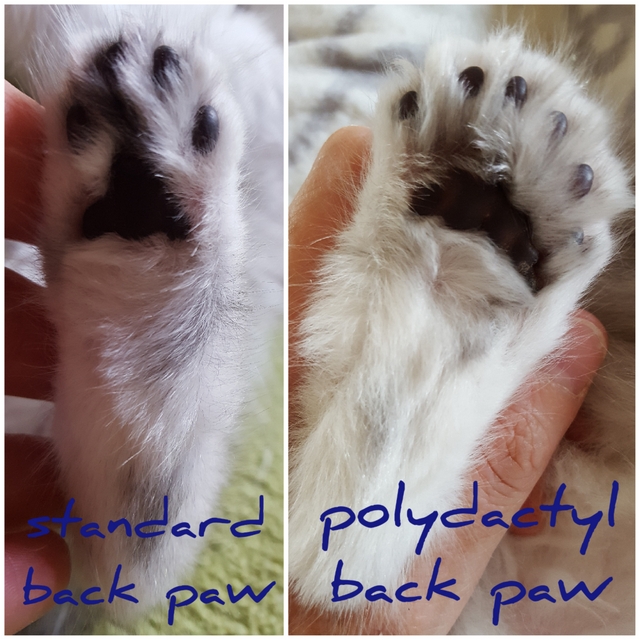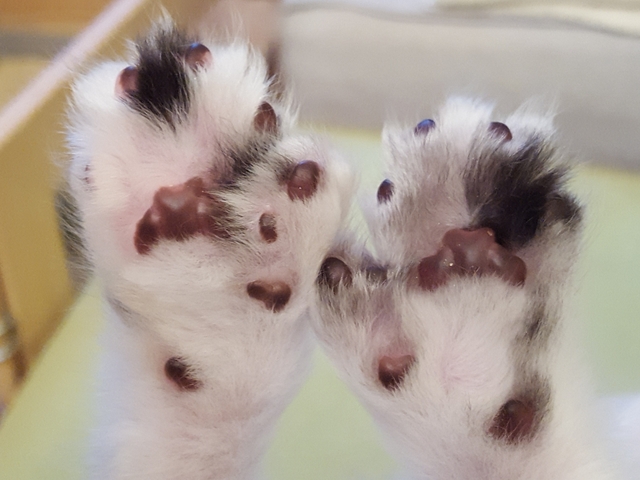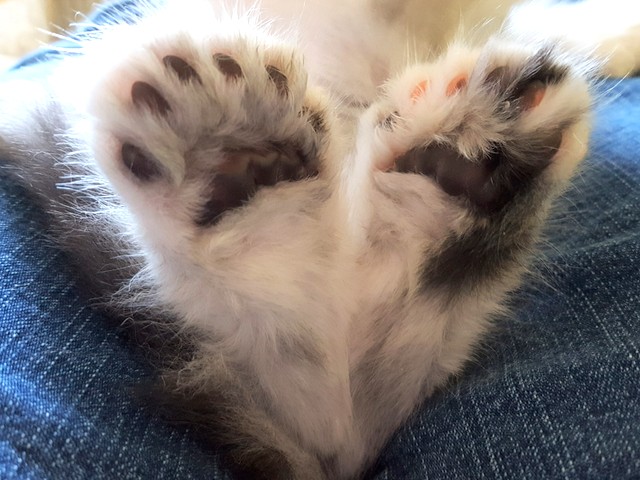Polydaktylie - what about those extra toes?
Polydactyly (also called poly for short) is an inherited anatomical specialty that often occurs in Maine Coon cats, but also in other cats, people, dogs, guinea pigs and birds. The term comes from the Greek and is made up of „Poly“ (many) and „Daktylos“ (toes or fingers).

Cats with polydactyly have up to 7 toes per paw. The additional toes are either only on the front paws, which is usually indicated by a „P“ in the cat name, or on the front and rear paws, which can be recognized by a „PP“ in the cat name.

However, since it was difficult to introduce a „barn cat“ with this characteristic that had not existed in the pedigree world before to the American cat organisations, it was decided to postpone the recognition of this variant to a later date. They were always approved for breeding, which is why this speciality has remained in the breed to this day. The admission to exhibitions has only recently taken place.
On the front paws, the additional toes are usually laid out as „thumbs“, also known as „mittens“, with one or more additional toes set off separately towards the middle of the body. On the hind paws you can find the „patty“ or „snowshoe“ paws, a wider paw on which the additional toes are largely identical to the four standard toes. The „patty“ or „snowshoe“ paws are also rarely found in front. The number of toes can be different on each paw, but is changed either on both front paws or on all four paws, never only on one paw or only on the hind paws.

The form of polydactyly present in the Maine Coon is also called the Hemingway form, since the writer Ernest Hemingway kept a population of such polydactyl cats in his house.
Polydactyly can only occur if at least one parent also has more toes. As a rule, the number and distribution of toes is then inherited in a similar way to that of the parent, with only minor deviations. It cannot be inherited from grandparents or more distant relatives, since every cat that carries the gene for polydactyly also shows it optically, the gene cannot be passed on in a hidden manner.

It is often said that polys have a very special character. This doesn't make any sense to me, paws and character are inherited independently of each other. I can say about my first polycat, Olala, that she has a very special character, namely that of her grandfather Floh, who has no polyfeet. I also recognize the characters of their ancestors in their children, regardless of their number of toes. For me, every kitten has a special and individual character, regardless of whether it has more or fewer toes.

© This text comes from Britta Singethan and is not released for copying.
